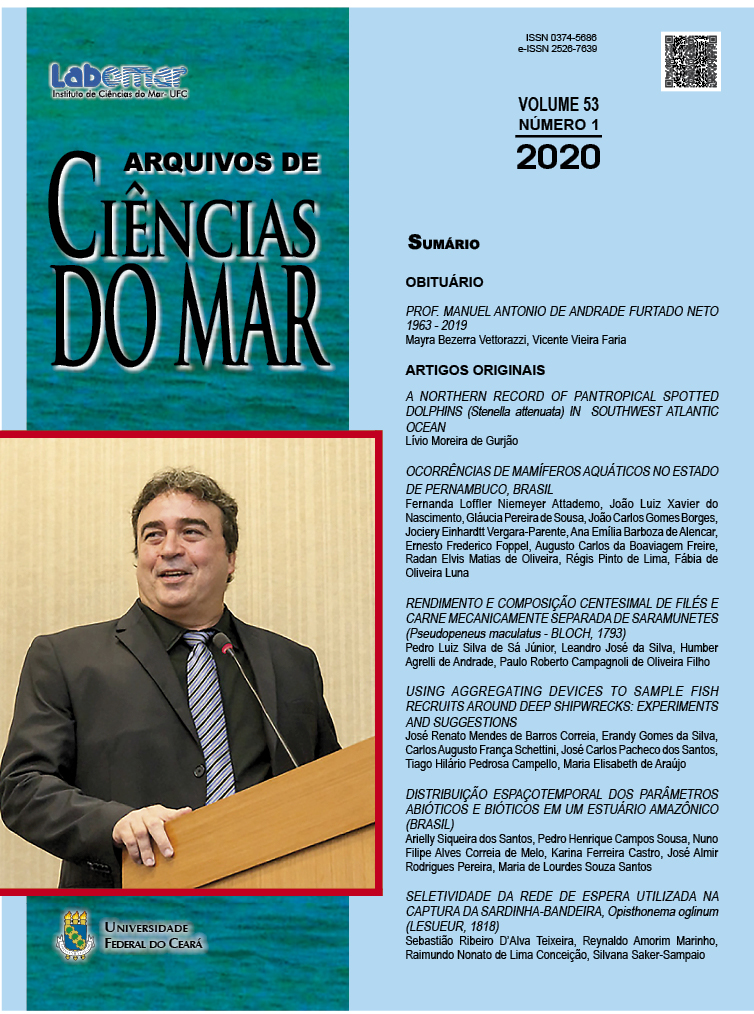Temporal space distribution of abiotic and biotic parameters in an amazon estuary (Brazil)
DOI:
https://doi.org/10.32360/acmar.v53i1.41888Abstract
The objective of this work was to evaluate the distribution of abiotic parameters (temperature,
salinity, pH, dissolved oxygen, dissolved oxygen saturation rate, suspended material, N-ammoniacal,
nitrite, nitrate, phosphate, and silicate) and biotic (chlorophyll a) in relation to the climatic periods
of the Amazon region in the Guajará-Mirim estuary, which is located in Vigia, Pará. Water collection
for the analysis of abiotic and biotic parameters occurred in the months of September and November
of 2011 and January, March, May, and July of 2012. The distribution of abiotic and chlorophyll a
parameters in the Guajará-Mirim estuary is influenced by periods of both greater and lesser rainfall,
which is also indicated by the analysis of the main components. The saturation rate of dissolved
oxygen in the study period classified the area as a zone of low saturation without a pollution zone.
In addition, the average value of dissolved oxygen for this area exceeded the value established by
Conama nº 357/2005 for the classification of bodies of water. The findings revealed that the majority
of N-ammoniacal and nitrate concentrations also exceeded this value, which indicates the need for
more detailed monitoring to assess the diffuse sources of pollution in this estuary. With this
information, mitigation measures can be proposed to maintain the water quality in this environment,
which is crucial for the local population.
Downloads
Downloads
Published
How to Cite
Issue
Section
License
1. Proposta de Política para Periódicos de Acesso Livre
Autores que publicam nesta revista concordam com os seguintes termos:
- Autores mantém os direitos autorais e concedem à revista o direito de primeira publicação, com o trabalho simultaneamente licenciado sob a Licença Creative Commons Attribution que permite o compartilhamento do trabalho com reconhecimento da autoria e publicação inicial nesta revista.
- Autores têm autorização para assumir contratos adicionais separadamente, para distribuição não-exclusiva da versão do trabalho publicada nesta revista (ex.: publicar em repositório institucional ou como capítulo de livro), com reconhecimento de autoria e publicação inicial nesta revista.
- Autores têm permissão e são estimulados a publicar e distribuir seu trabalho online (ex.: em repositórios institucionais ou na sua página pessoal) a qualquer ponto antes ou durante o processo editorial, já que isso pode gerar alterações produtivas, bem como aumentar o impacto e a citação do trabalho publicado (Veja O Efeito do Acesso Livre).

